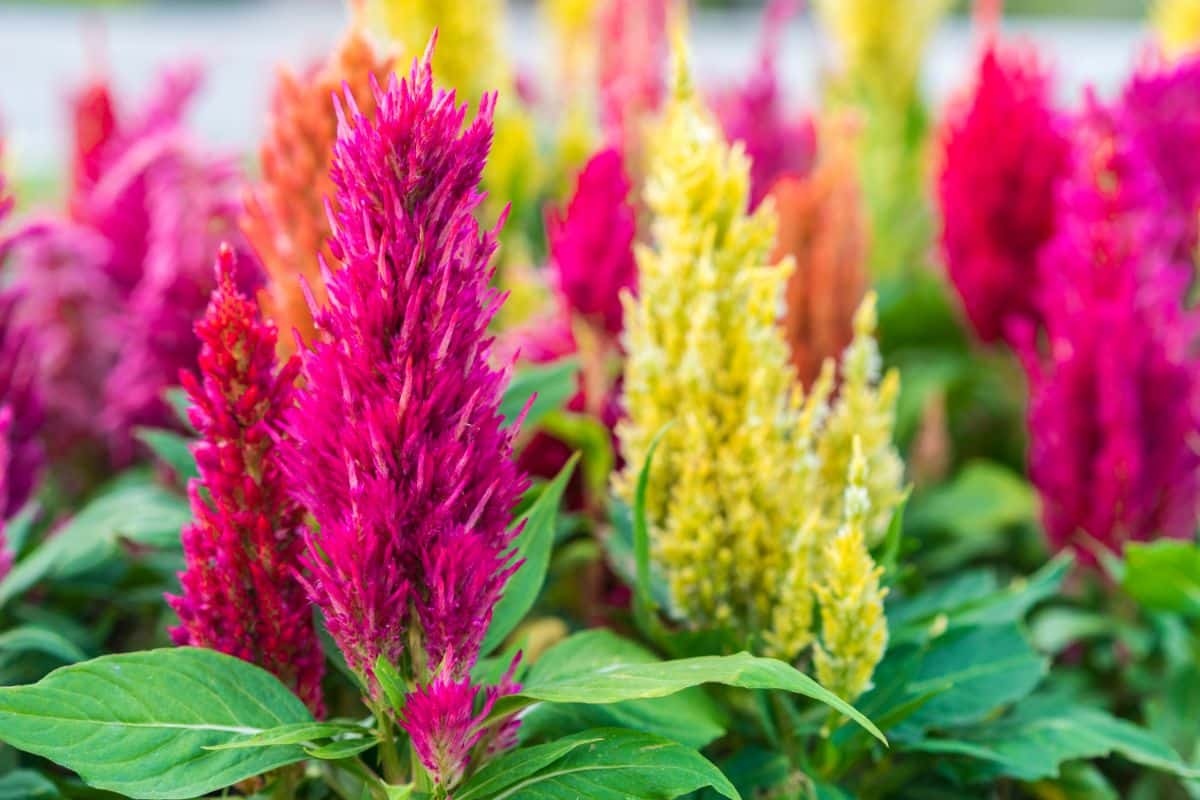
If you want to bring some truly vivid colors to your garden, celosias can make for a wonderful addition. In our full celosias growing guide, you will learn how to plant and maintain these gorgeous ornamental plants. Skip to any section in the advanced jump below, or read on for the full guide.
Jump to:
- What Are Celosias?
- Are Celosias Annual or Perennial?
- Celosia Basics
- Where Do Celosias Grow?
- Why Grow Celosias?
- When Do Celosias Bloom?
- How Long Do Celosias Bloom?
- When to Plant Celosias
- Ideal Growing Conditions for Celosias
- How to Plant Celosias
- How to Propagate Celosias
- How to Care for Celosias
- Recommended Planting Combinations for Celosia
- Celosia Landscaping Ideas
- Recommended Celosia Varieties
- Frequently Asked Questions About Growing Celosias
- Where to Buy Celosias
What Are Celosias?
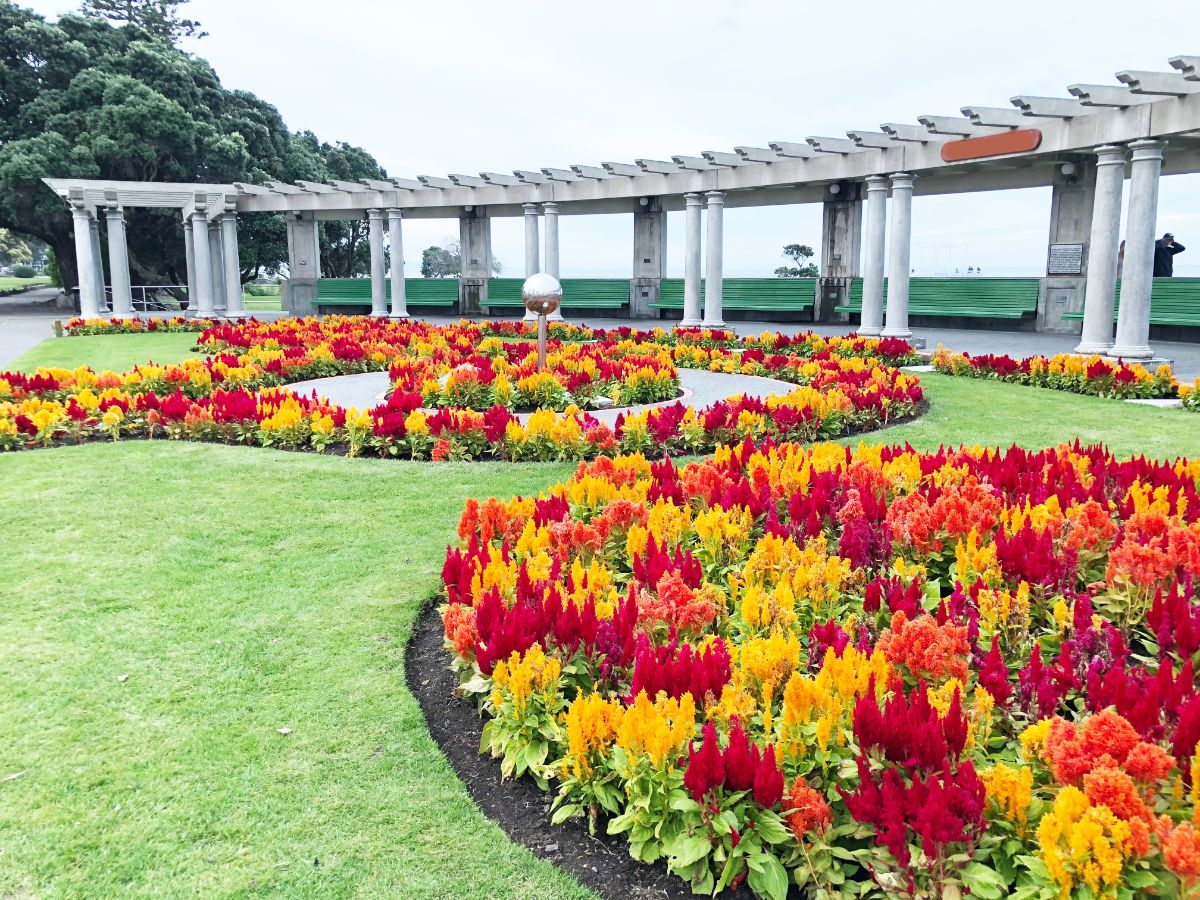
Celosias are plants that belong to the genus that is also called Celosia. That genus is part of the amaranth family. Common names for celosia include “cockscomb” and “woolflower.” They are also called mfungu in Africa. The name “celosia” comes from the Greek for “burning.” Many celosias have blooms that look like little flames, thus the name.
Interestingly enough, there are other types of celosias that produce blooms that look completely different. They come in a similar range of hues, but instead of having a flame-like appearance, they have a brain-like appearance (the shape of the bloom heads and the “folds” of the blooms resemble brains). Those ones are referred to as “brainiac” celosias.
You will also encounter “plume” types of celosias that have a feathery appearance.
So, you have a couple of options for bringing different shapes and textures to your garden. Many people will be surprised when you tell them that the flame-like blooms and the brain-like blooms are both members of the same genus!
Are Celosias Annual or Perennial?
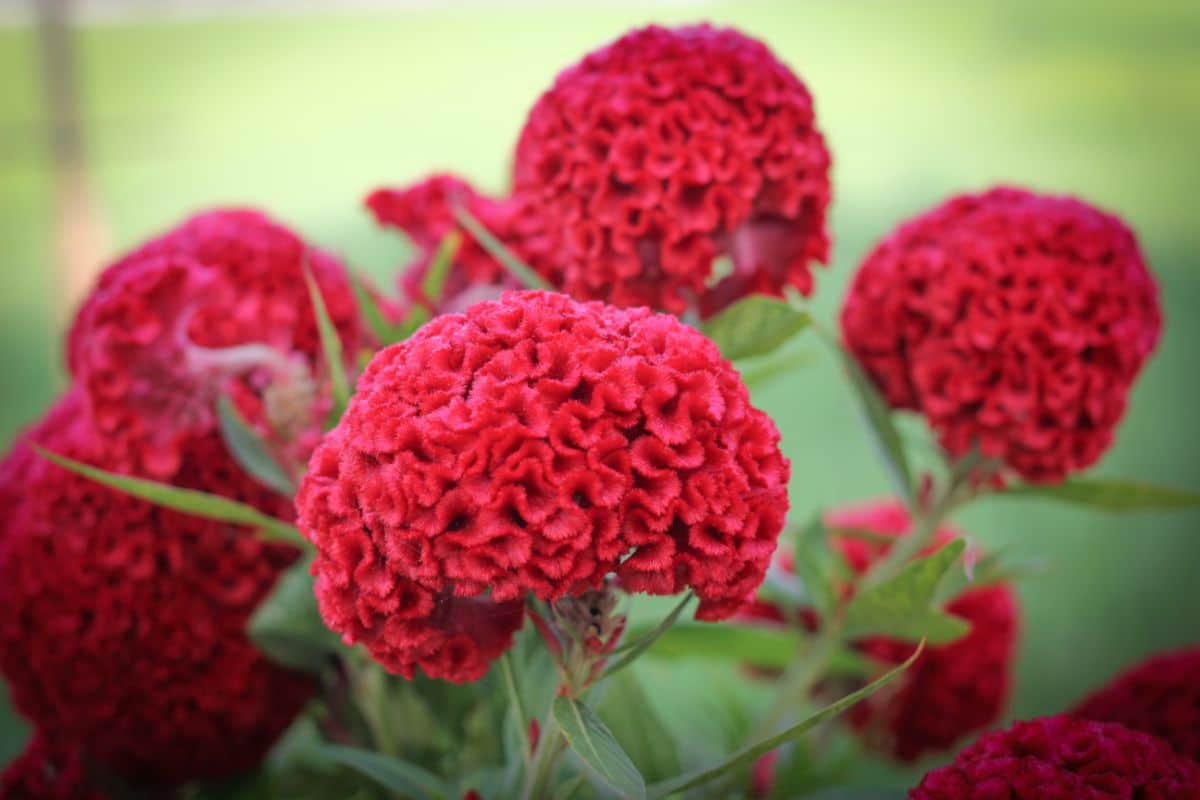
Celosias are tender perennials. This means that if you live in a warm enough climate, they will come back every year. In the case of celosias, they are easy to grow as perennials in zones 10-11.
If you live in a cooler climate, you may be able to grow celosias as perennials, but you will have some work to do to protect them during the winter. They are a bit harder than other tender perennials to keep alive outside their ideal climate zones.
Celosia Basics
| Zones: | 10-11 |
| Blooming season: | Summer and fall |
| Expected height: | Up to 12 inches |
| Soil: | A rich, well-draining soil |
| Sun: | Full sun |
Where Do Celosias Grow?
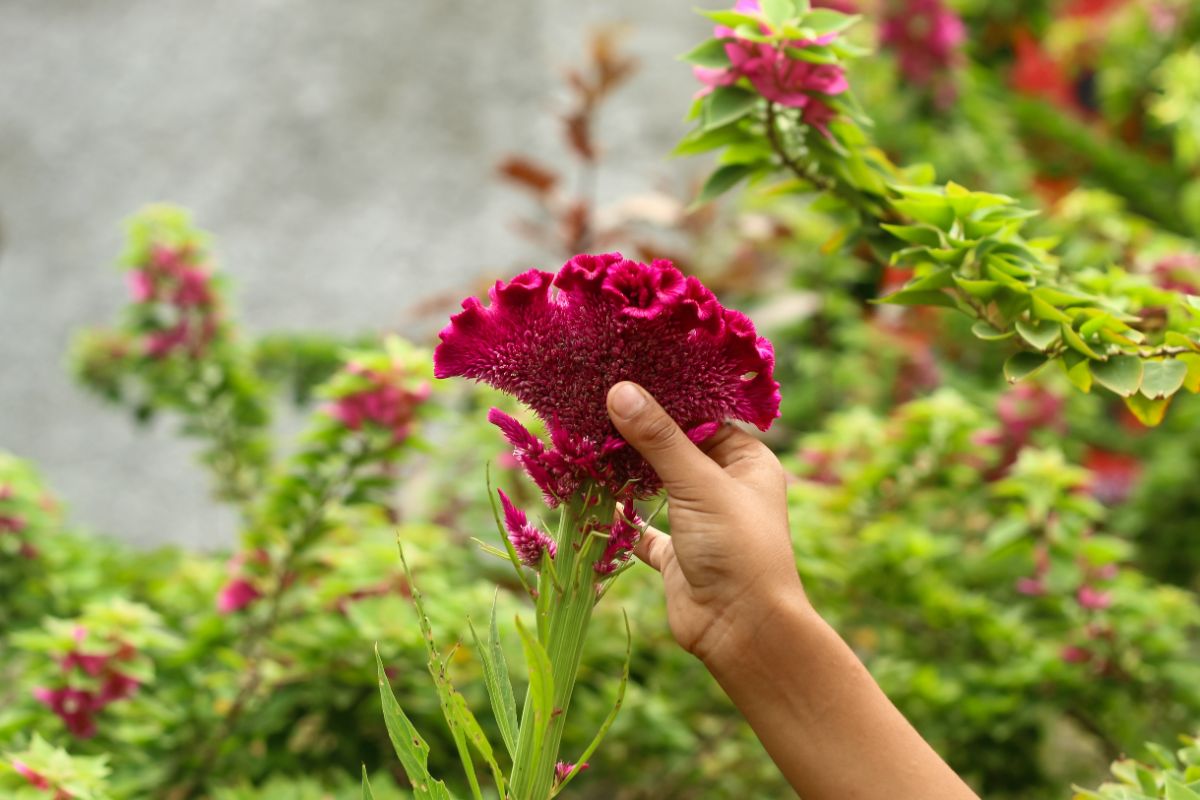
Celosias are native to Africa. They now grow throughout Africa, Central America, the northern part of South America, and parts of Asia. They are cultivated in other parts of the world as well, sometimes as annuals, other times as carefully overwintered perennials.
Why Grow Celosias?
• Celosias make fantastic cut flowers. You can keep them blooming for weeks if you maintain fresh water in your vase.
• In a zone where celosias grow as perennials, you can enjoy them for years on end. If your climate is hot, do not make the mistake of throwing them away.
• While many plants in your garden may be toxic to cats, dogs, and horses, celosias are not.
• It is hard to beat these beautiful flowers for variety. With such drastically different shapes, you will love the diversity of this genus. Plus, some of the flower shapes are really distinctive. You are not going to find anything else that looks like brainiac celosia, especially. You can bet that your neighbors will be asking you about these plants and where they can get them.
• Celosias have a relatively long bloom period. And if you plant some earlier and later-blooming varieties, then the bloom time will be even longer.
• The bold colors of celosia plants really stand out. You will be able to spot these beauties from clear across your garden.
• Celosia plants are relatively low-maintenance, making them an easy-grow option for beginners as well as gardeners who are pressed for time and energy.
• You will discover that celosias are popular with local pollinators like hummingbirds, bees, and butterflies.
• Celosia is considered to be a pest-resistant and disease-resistant plant. You should be able to grow them with few or no problems.
• You will be pleased to hear that celosia is drought-resistant and can weather hot, dry climates well so long as you keep up with its watering requirements.
When Do Celosias Bloom?

Celosias bloom during summer and autumn. The bloom period starts as early as June and can continue until the first frost.
How Long Do Celosias Bloom?
Individual celosia blooms do not last very long, but the plants can keep producing new blooms throughout the bloom season. Remember to deadhead them if you want to encourage more blooms.
When to Plant Celosias
The right time to plant celosias in your garden is in spring after the last frost is behind you. If you are starting with seeds, you can either sow them outdoors after the last frost or start them indoors a couple of months early.
Ideal Growing Conditions for Celosias

You can’t just plant celosia anywhere and expect it to grow well—you need the right conditions for it to thrive. Below, we go over sun, water, and soil requirements for celosias.
How Much Sun Do Celosias Need?
Celosia plants love sunny spots; they need about 6-8 hours of sun every day to do their best. While sunny conditions are preferred, you may be able to get away with a little bit of light shade.
What Type of Soil is Right for Celosias?
You should plant celosias in nutrient-rich soil. You can enhance the soil quality with compost if necessary and also use fertilizer on these plants as they grow. Keep soil moist but not waterlogged. Excellent drainage is critical.
One more thing to keep in mind is that these plants, with their colorful flowers, prefer a slightly acidic pH.
If your mulch or compost is acidic, that can help improve the pH if it is too alkaline starting out. There are also amendments that can increase acidity, such as sulfur or aluminum sulfate.
How Much Water Do Celosias Need?
Although moist soil is important for celosias, it is better to err on the dry side than on the wet side. To check if your celosia requires watering, push your finger into the top two inches of the soil. If they are dry, then it is time to water.
How often you need to water your celosias will be dictated by your climate conditions as well as where you planted them. If they are in containers, they will dry out more quickly than they would in your flower beds, which means you may need to water them more frequently.
How to Plant Celosias
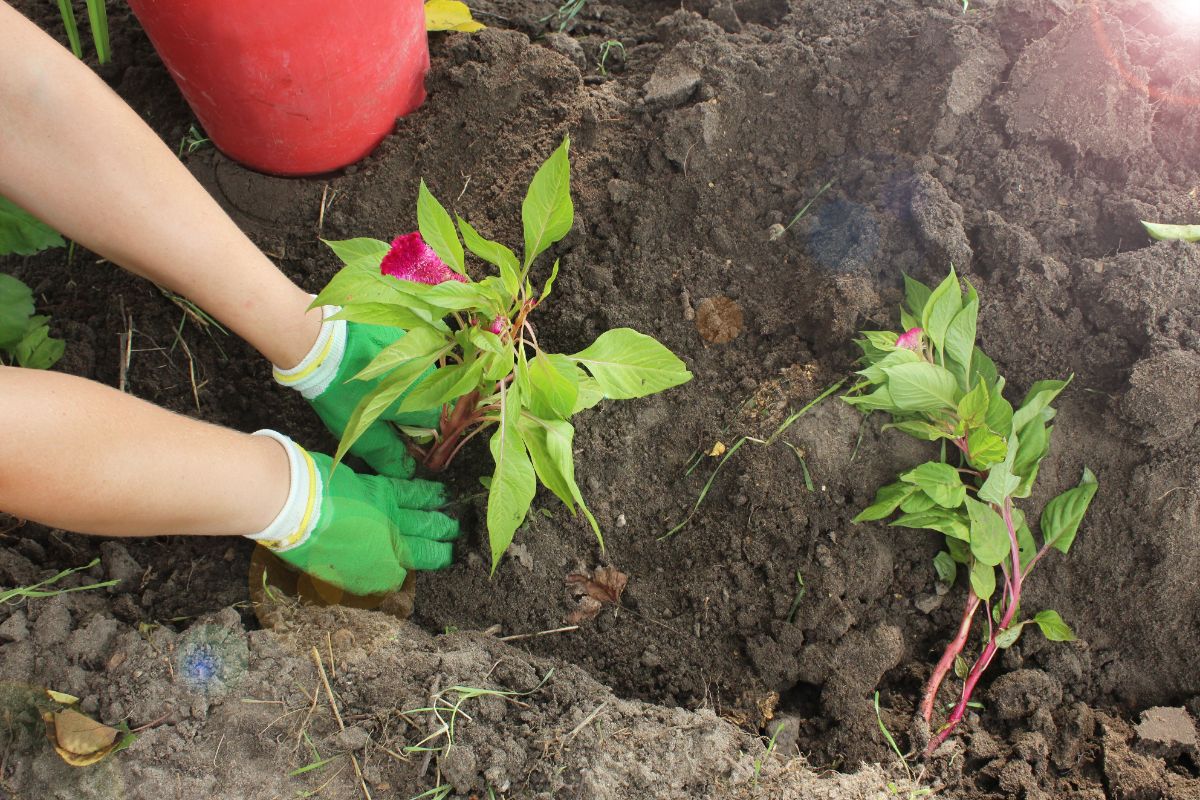
You probably will obtain celosia in the form of a nursery plant, though you might end up purchasing seeds.
Below, we will explain step-by-step how to plant celosia in your garden. We will assume you have a nursery plant; for instructions on seeds, scroll down to the sections on propagation.
One quick note—celosia nursery plants are usually pretty cheap. Some cultivars are a bit pricier, however. If you are in a zone that celosias are hardy in, those cultivars can thrive for years, so do not shy away from buying them. They can also be a good purchase even in an annual zone, however, since you can propagate new plants from the original, saving money in future years.
Ground Planting
1. After you select a spot for the celosias in your garden bed, amend the soil with compost to improve richness and drainage.
2. Dig holes for your celosias about 8-12 inches apart.
3. Plant the celosias and backfill the soil.
4. Water well.
Container Planting
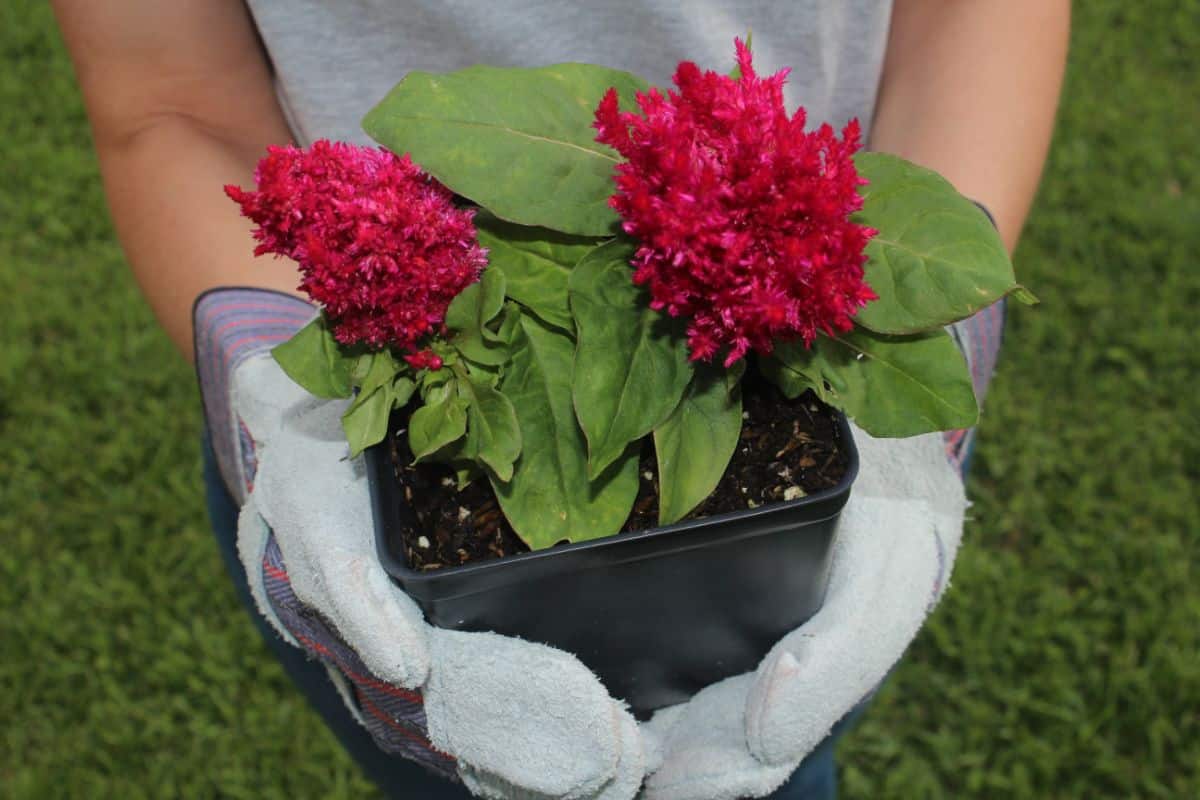
1. Choose containers that feature drainage holes for your celosia plants.
2. Fill the containers with potting mix. When they are partway full, set the celosias in the containers.
3. Finish filling in the soil around the celosias.
4. Water well, and pick a suitable spot for your containers.
How to Propagate Celosias
Hopefully, you live in a climate where you can enjoy your celosias year after year as perennials. But if you cannot get them to survive, you will at least be pleased to know that you can still propagate new celosia plants using techniques like cuttings or planting from seed. Let’s go over what you need to know.
Starting Celosias from Seed
Walter Reeves describes the easiest way to grow celosias from seed:
“It is not uncommon for celosia to reseed itself. If you want this to happen each year, cut them back after the leaves and flowers have turned brown. Scuff the ground with your shoe wherever you would like new flowers to grow and shake the flower heads over it so the tiny black seeds fall out. Gently pat the seeded area with the sole of your shoe; you’re all set for next year.”
Take note: There are some cultivars of celosias that do not produce seeds. If that is the type that you have, then you will need to propagate using cuttings, as we go over below.
Starting Celosias from Cuttings

1. Take some cuttings from your existing plants. You can take these right off the top. They should each measure 4-6 inches.
2. Leaving the top leaves in place, take off the leaves from the bottom part of each of your cuttings.
3. Get a clear container and fill it with water, then put the cuttings inside. You should not let the leaves touch the water, just the lower part of each stem.
4. Wait for your cuttings to root. Make sure you change the water out regularly so that you do not promote rot. Eventually, you will be able to see the roots developing. After you give them some time to develop, you can transplant them. The whole process takes 3-4 weeks.
5. Harden the new plants before you move them outdoors permanently. To harden them, take them outdoors for a short time, then bring them back inside. Then do it again, but take them out a little longer. Keep repeating this until they are used to living outdoors.
How to Divide Celosias
We do not see any evidence that gardeners divide celosias. They should be just fine without division, even if you are growing them as perennials. Use cuttings or seeds to propagate them if you just want to increase their numbers.
How to Care for Celosias
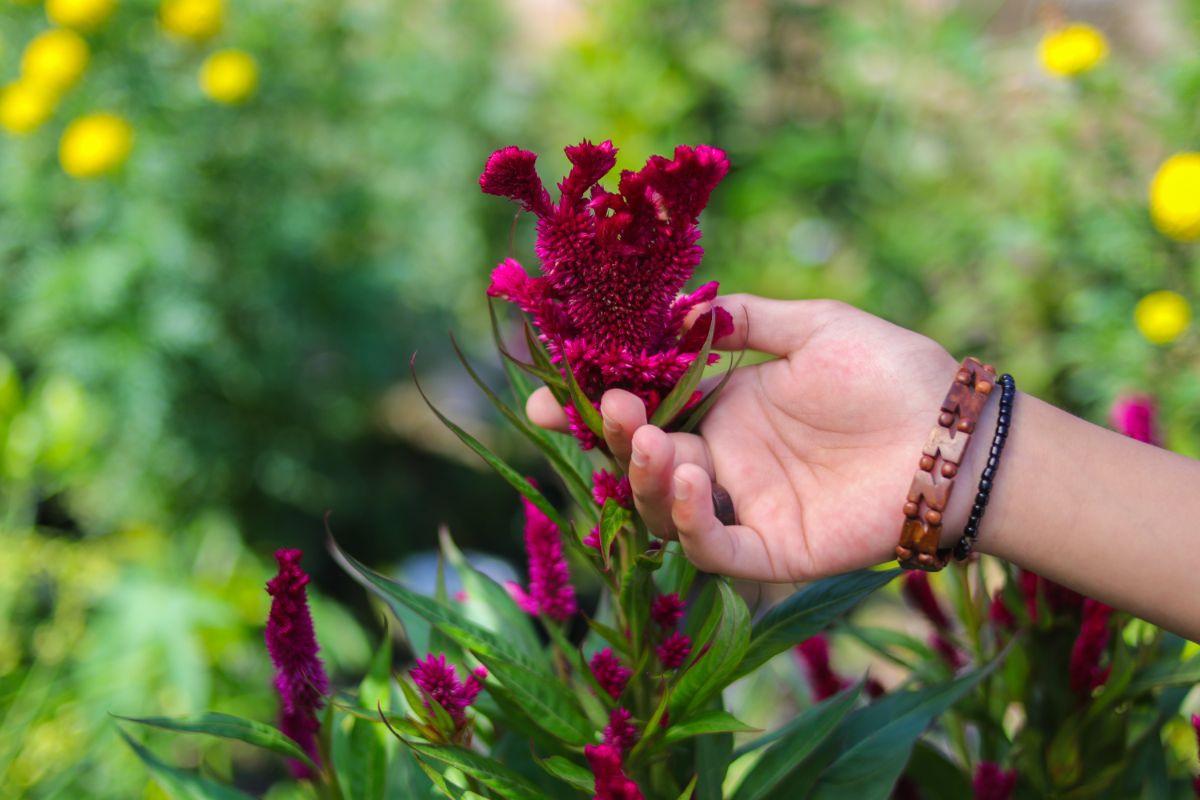
Now that you know the basics of planting and propagating celosias, it is time to find out how to give them the right care. Here is how to grow these easy, low-maintenance tender perennial blooms.
How to Fertilize Celosias
Celosias do need fertilizing to grow at their best. The University of Minnesota Extension says, “A general-purpose fertilizer with equal amounts of Nitrogen, Phosphorus, and Potassium should be incorporated into the soil at the time of planting. After planting, celosia should be fertilized monthly using a fertilizer with a higher phosphorus than nitrogen content to promote new blooms.”
How to Mulch Celosias
After you plant your celosias, add several inches of organic mulch to the top of the soil. Doing this will accomplish several things at once. First of all, the mulch will help provide more nutrition to the plants. Secondly, it will keep away weeds. Thirdly, it will help keep moisture in the soil on hot summer days. Your celosias will appreciate all three of these benefits.
How to Stake Celosias
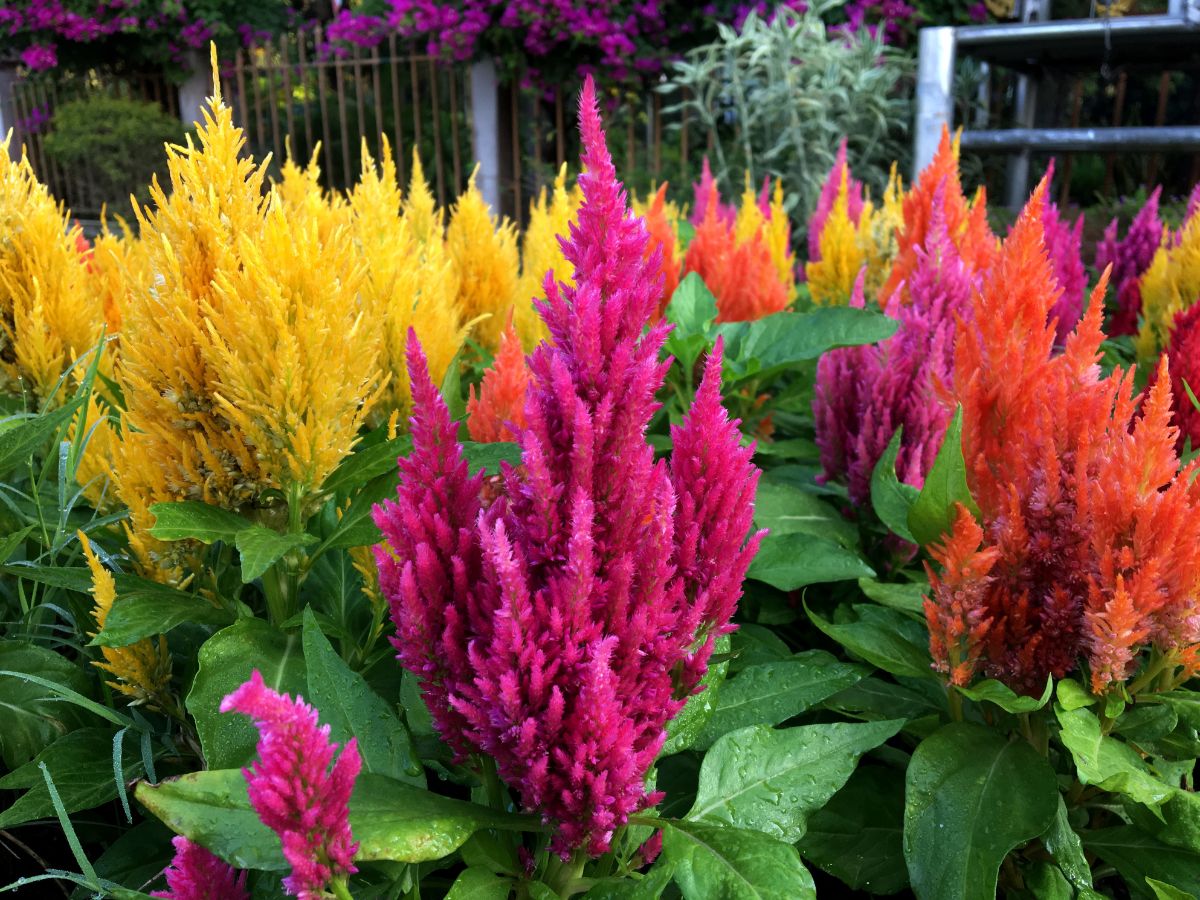
Many celosias grow just fine without support, but some cultivars are tall and top-heavy, which means they can flop if they do not have sufficient support.
Solving this problem is easy. Before you plant your celosias, push some bamboo stakes into the soil. Then, after you plant them, use twine to gently and loosely attach the plants to the stakes. As they get taller, you can add more ties.
How to Prune Celosias
Pruning celosias mostly consists of deadheading. Find out more in the next two sections.
How to Deadhead Celosias
Deadheading celosias is a great way to lengthen their bloom time each year. Garden Gate Magazine says, “Blooms start to fade from the bottom up, so when the bottom third to half is done, remove it at the leaf joint. This encourages side stems to take off more quickly, and plants won’t waste energy producing seed.”
When to Cut Back Celosias
If you are keeping celosias as perennials, do you cut them back for the winter? If the foliage dies back, then yes, you would want to trim it away. That said, some celosias seem to be evergreens, so cutting them back may not make sense.
Can You Overwinter Celosias?

With most tender perennials, you have the option of bringing your plants indoors for the winter and then putting them back outside when spring returns the following year.
Can you do that with celosias? It depends on whom you ask. In some cases, this plant may survive winters if you bring it indoors, but we have heard that the results are “unpredictable.” So, you can give it a try. Your celosias might do okay, or they might not.
What about overwintering celosias outdoors? That might work if your climate zone is right on the edge of what they can tolerate.
A gardener on this forum gives the following recommendations for overwintering celosias outdoors: “Outside, you'd want to use/create a spot that's more warm and dry (or well-drained) than usual, the most common 2 elements of successful microclimates/zone-pushing. If frozen ground is not why they are not usually hardy where you are, it's likely a moisture issue that is more tricky to control. Going after the drainage angle would help in that case; keep adding organic matter to the soil surface.”
The user continues, “Other measures like putting some dark colored bricks or pavers around plants, a cold frame, turning a dark nursery pot over them, black plastic jugs of water, a pile of leaves, can make a difference if you're battling the ground freezing.”
So, you may be up for a challenge if you want to overwinter celosias. We are not going to say it is impossible, though.
Are Celosias Vulnerable to Diseases or Pests?
As with anything else you would plant in your garden, you do need to watch out for diseases and pests with celosias. Thankfully, these problems tend to be minimal.
Some celosias may come down with stem rot, botrytis blight, or leaf spot. The majority of disease issues can be prevented simply by making sure that the soil is draining and that your celosias have sufficient room to breathe.
Some insect pests that can go after celosias include aphids, whiteflies, and red spider mites. You may also sometimes have problems with slugs and snails.
Rabbits sometimes eat celosia, as do deer. Actually, where deer are concerned, reports are mixed. Some gardeners report that deer show no interest in their celosias, while others report that deer do like to munch on them. So, it might depend on the availability of other foods as well as the individual preferences of the deer in your area.
Recommended Planting Combinations for Celosia
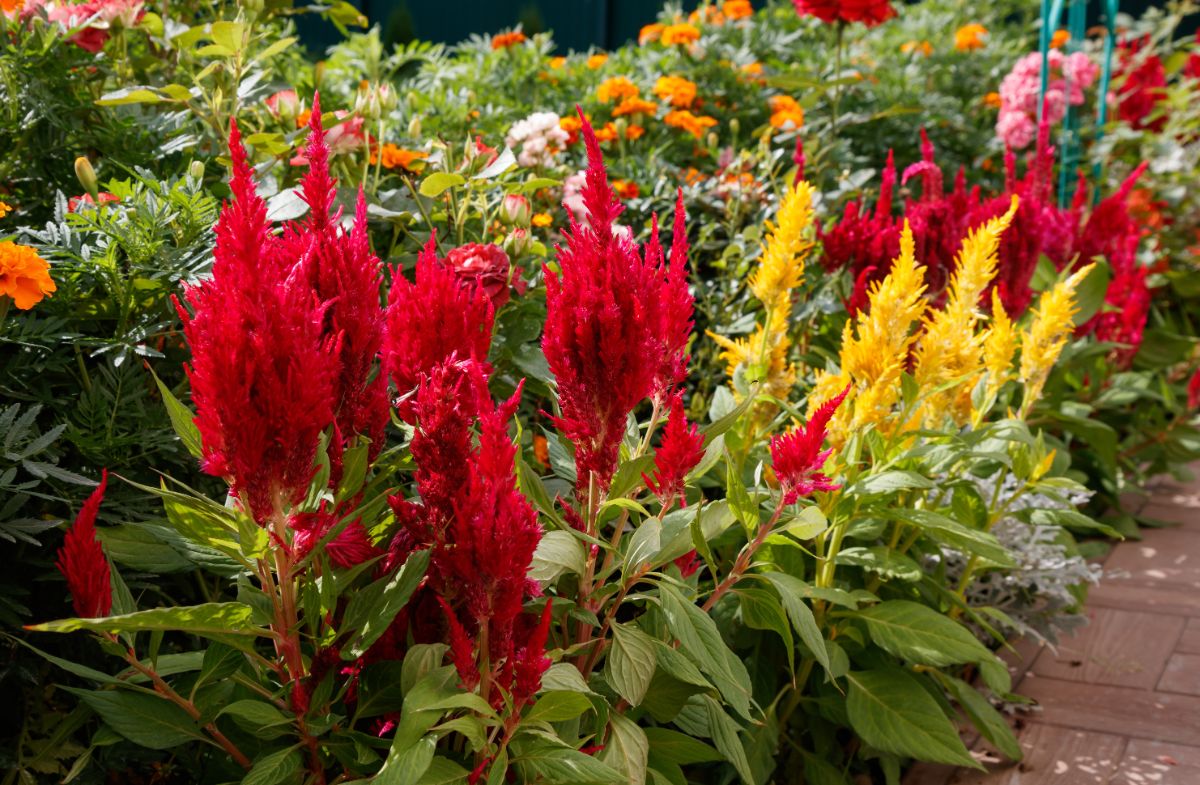
What are some plants that work well with celosias?
• Marigolds: With their vibrant sunny hues, marigolds are the ideal accompaniment for your celosias’ symphony of colors.
• Nasturtiums: If your goal is to bring lots of pollinators to your garden, try planting celosias next to nasturtiums.
• Zinnias: These flowers feature similar colors to celosias and enjoy full sun just as much, making them natural companions.
• Coral bells: While these plants, with their ornamental leaves, prefer some shade, they can survive in full sun. Some of them have dark leaf colors, making them ideal for contrast with your celosias.
While these ideas should give you the initial spark of inspiration you need to start planning your plantings, we have no doubt that you will think of some additional ideas when you consider what you already have growing in your garden.
Celosia Landscaping Ideas
Let’s take a look at a few ideas for how you can liven up your landscape by planting some beautiful celosias.
• Formal plantings: When you create formal plantings, you are trying to make really distinctive shapes with sharply defined edges. It helps to use bright colors to make them stand out, and celosias are perfect for this purpose.
• Borders: As you would guess, the bold hues of celosias can really make a border stand out, whether it is along a sidewalk, a wall, a flower bed, a driveway, or any other feature in your landscape.
• Against a dark backdrop: One of the best things you can do with celosias is use them to create contrasts. Try planting a plant with dark, voluminous leaves behind your celosias or maybe even dark, tall grasses. The bold hues of the celosias will “pop” against the dark backdrop.
• Container garden: Potted celosias can thrive quite happily, so feel free to place them on your deck or patio.
• Pollinator garden: The flower colors of celosias can be attractive to pollinators, making them a great addition to a pollinator garden.
• Massed together: Massing celosias together as bedding plants can create a dramatic effect, whether you go with a single color or mixed hues.
Recommended Celosia Varieties

Here are some of our top recommended varieties of these vibrant flowers to add to your garden:
• Silver’s Cockscomb: The eye-catching blooms produced by this type of celosia have a silvery hue with ombre pink tips.
• King Coral: When you see these stunning blooms, you will immediately understand where the name comes from. They really do look like deep pink brain coral.
• Sylphid: Plant this celosia for intriguing feathery blooms that have a greenish hue.
• Plumed Celosia: This name refers to the species Celosia Plumosa, which comes in a wide range of beautiful warm colors.
• Apricot Brandy: If what you are after is attractive blooms with a fiery appearance, then you cannot go wrong with the orange Apricot Brandy cultivar. Each feathery bloom looks like a flame.
• Celosia Floribunda: This is a species of celosia that produces relatively compact spike-shaped blooms with a bold color.
• Silver Spinach: In case you are interested in planting a cultivar of celosia primarily for culinary reasons rather than ornamental reasons, you could consider the Silver Spinach type. Actually, the diminutive white flowers are pretty, just not dramatic. The foliage is dense and tasty. If you are in a climate zone where it is perennial, you can harvest year after year.
• Red Velvet: This is a type of brainiac celosia that produces blooms in a vibrant color of deep red.
• Cramer’s Amazon: Here is an option if you are interested in pinkish-purplish types of celosias. The abundant blooms feature a pleasing gradient of hues.
• Flamingo Feathers: Featuring shades of rose pink and pale pink, this elegant celosia has more than earned its name.
• Toreador: If you still have not satisfied your desire for deep red celosias, then this cultivar will be sure to delight you.
• Sunday: Celosias in the Sunday series boast spectacular colors like vivid pink, orange, and gold. Put together in a mix, they can be especially eye-catching.
• Flamingo Purple: As the name states, this is a variant of the Flamingo cultivar that features more purplish blooms. Otherwise, its appearance is similar to the regular pink version of the Flamingo celosia.
• Reien: Another option for a bright red celosia is this one, which blooms early in the year.
• Celway™ Terracotta: One of the most unusual colors of celosia is this one, which is a kind of muted brownish rosy hue.
• Ruby Parfait: Despite the name, this is not a red type of celosia; the blooms are actually a purplish color.
• Celway™ White: As you would guess, the blooms on this cultivar of celosia are whitish.
• Orange Queen Improved: The blooms produced by this cultivar are a warm, sunny, orangey hue that will bring an inviting tone to your garden.
There are lots of celosia varieties in stunning colors, but now you have an idea of what is out there. Check your local garden center or online for celosia cultivars.
Frequently Asked Questions About Growing Celosias
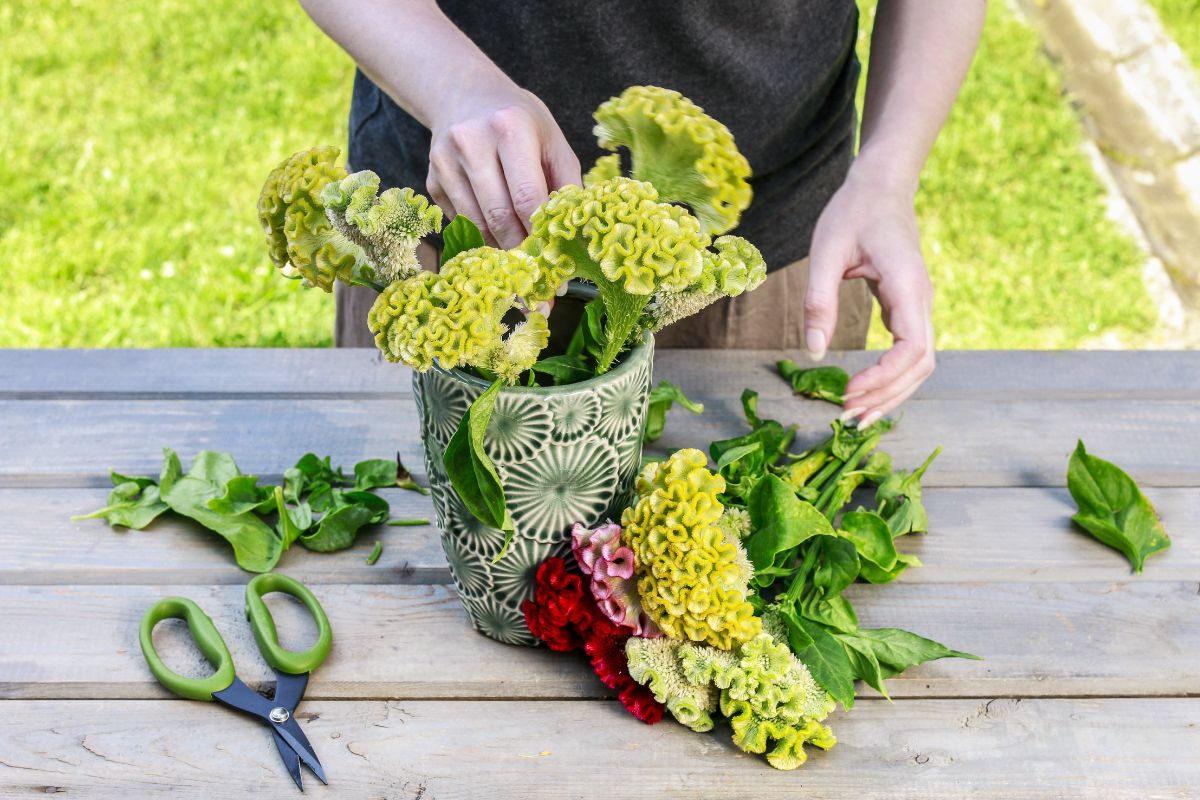
To wrap things up, let’s answer some frequently asked questions about celosia plants.
Insects, slugs, snails, and sometimes mammals are known to eat celosia. So, there are quite a few possible culprits.
Celosias are not poisonous to dogs or cats. That makes them a safe option for pet owners.
The multitude of colors and unusual flower shapes of celosias are not their only appeals; they are also edible plants.
Bernheim Arboretum and Research Forest says, “Nutritionally, celosia compares well to other leafy greens, containing protein, calcium, iron, phosphorus, and vitamins A and C. The leaves are a traditional vegetable in Central and West Africa and are collected when the plant is young, prior to flower production. They can be boiled or steamed and eaten as a side dish or combined with other vegetables in soups and stews along with their tender stems. Celosia is also eaten in Indonesia and India.”
What does celosia taste like? Reportedly, the flavor can be compared to spinach. It is important to note, however, that you need to harvest the leaves pretty early in order to enjoy the taste. If you wait too long, the flavor changes, resulting in some off-putting bitterness.
So, if you tried eating celosia and found it bitter, you just need to try harvesting it a bit sooner next year.
Yes, they do. The bees in your neighborhood will be thrilled to spend time flitting around your celosias.
Yes, celosia flowers can spread through self-seeding. That being said, they will not do so in a way that is aggressive or invasive. So you do not have to worry about them taking over your yard. They spread in a good way.
Where to Buy Celosias

Are you ready to bring the vivid hues of celosia plants to your garden? You will be able to shop the biggest selection of spike, plume, and brainiac celosias online.

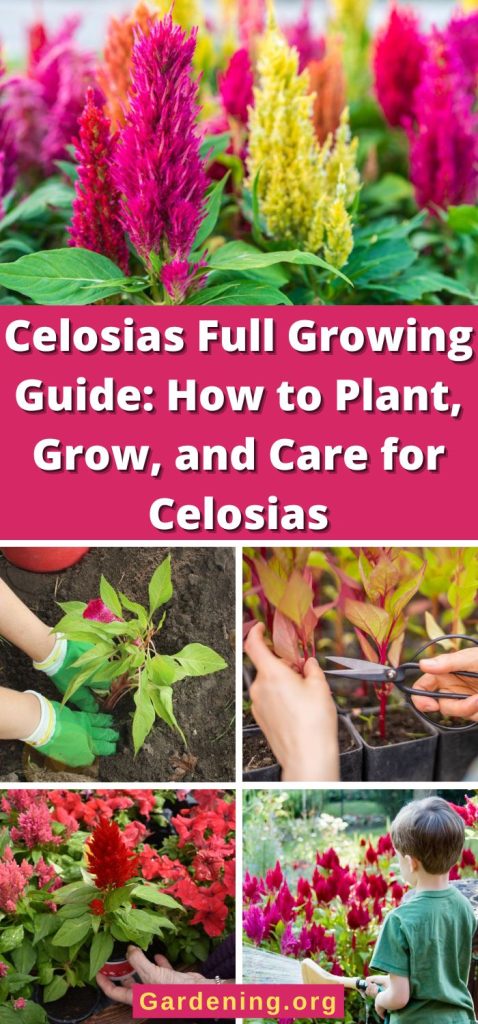
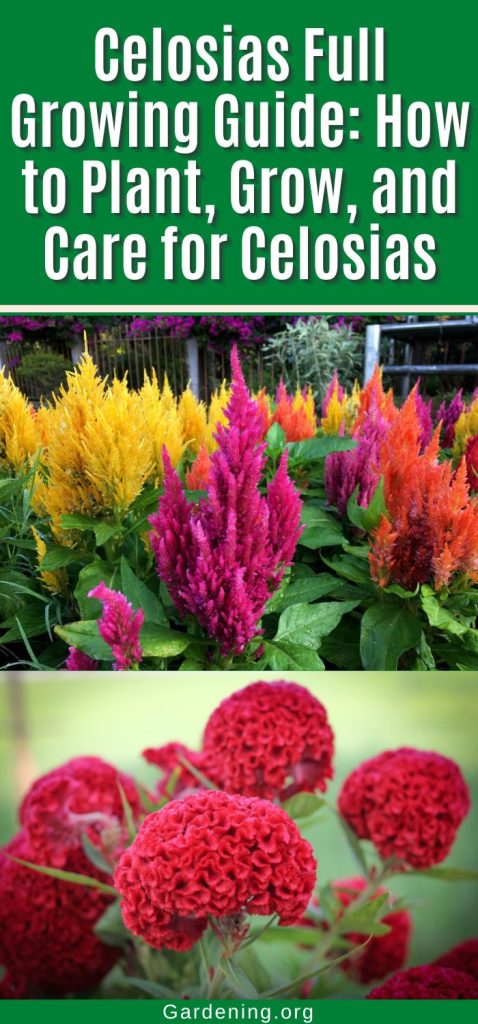
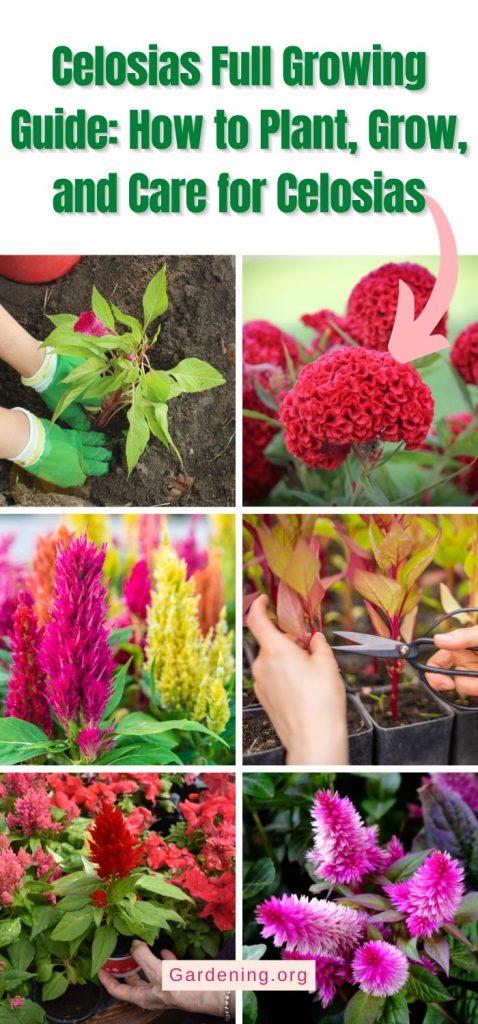
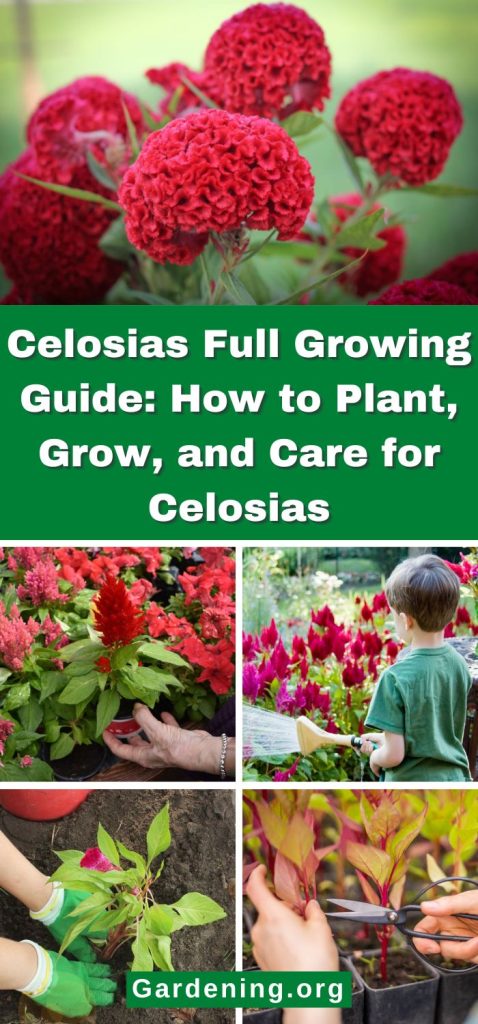
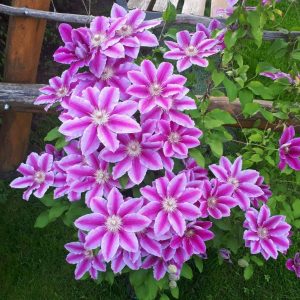
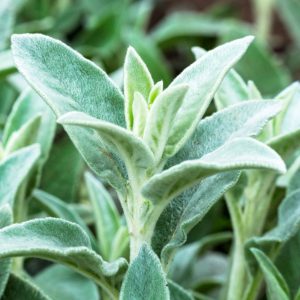


Leave a Reply